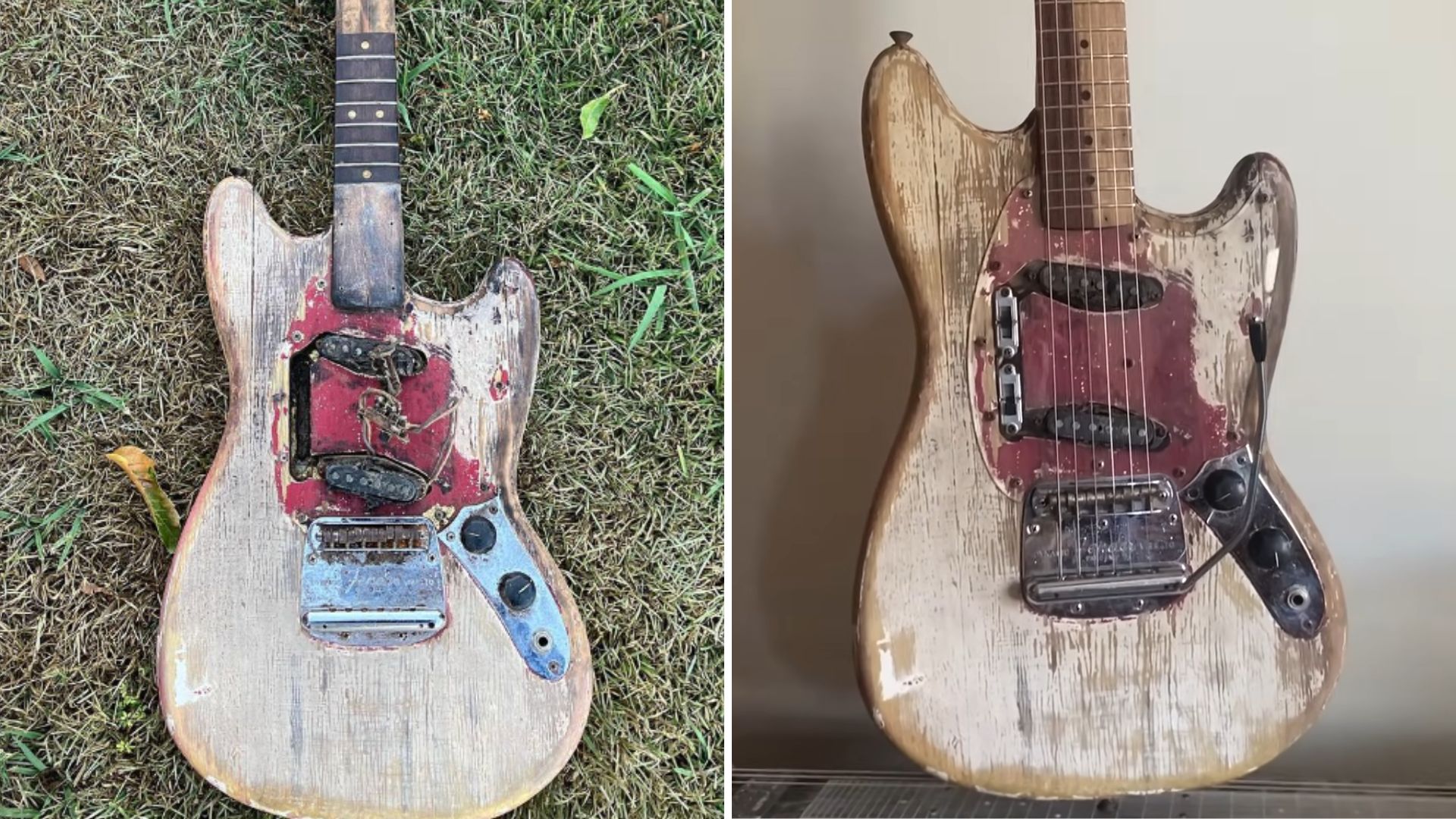“Ravaged by floods and fires, but back from the dead”: The 'Methstang' is the most heavily trashed vintage Mustang we've ever seen – and it's been miraculously restored
Featuring molten pickups, significant chip damage, and signs of a beetle living in the headstock, the Methstang was labeled a corpse by its savior before receiving a sensational glow-up

We at Guitar World love a guitar repair story, but few revamps have been as dramatic as this one – someone has resurrected a 1966 Fender Mustang that looked more like a zombie than a musical instrument when it was found.
The electric guitar was originally sourced by @red_stick_guitarandamp on Instagram, who saw it on Craigslist. YouTuber Levon Campbell, who runs the Not A Luthier channel, then got hold of the six-string to pull off a miraculous restoration.
Campbell describes the guitar as being “washed out of its shallow Louisiana grave, ravaged by floods and fires” – a total “abomination” of a guitar.
The Mustang's list of injuries was long and steep. Its single-coils had been melted, its neck charred, shrunken, and “dry as a bone”, while the headstock was showing signs that an ambrosia beetle had born a hole into it, causing a fungus to stain the wood.
Further still, there were mere “remnants” of a pickguard and its Dakota Red paint job, and a meager seven frets of its fingerboard left. Only a couple of its side dots managing to “hang on” to a guitar that was inflicted with “significant chip damage” remained.
However, while the guitar’s heart-breaking state left Campbell asking, “What on earth could do this?” the results of his operation are simply sensational. For that, he has two minor miracles to thank.
“Turns out, absolutely every component of this guitar that didn't melt away or fall off is here, accounted for, original, and complete,” says Campbell. “The most surprising aspect of the rebuild is the fact that the pickups are still functioning perfectly.”
All the latest guitar news, interviews, lessons, reviews, deals and more, direct to your inbox!
So, after a thorough cleaning, Campbell was able to reinstall most of the original parts, while crafting a bespoke fingerboard and pickguard for the newly anointed 'Methstang'.
Its new fretboard has been built from scratch, with a tailored-to-fit nut and black inlays adding a great aesthetic to the instrument.
Campbell also had to drill “very large holes” to mount the still-functional molten pickups. The Mustang's original tailpiece was saved, with only a new whammy bar, some switches and a handful of other new parts needed to finish the job.
The final result still bears the scars of its neglected past but turns them into a point of pride and charm, with its charred pickups adding a 'dont-try-this-at-home' smokiness to its tone, and its acrylic pickguard reflecting the savaged wood underneath.
For another jaw-dropping guitar revival, check out this first-year Gibson Les Paul Junior, which was recently brought back to life against all odds.
A freelance writer with a penchant for music that gets weird, Phil is a regular contributor to Prog, Guitar World, and Total Guitar magazines and is especially keen on shining a light on unknown artists. Outside of the journalism realm, you can find him writing angular riffs in progressive metal band, Prognosis, in which he slings an 8-string Strandberg Boden Original, churning that low string through a variety of tunings. He's also a published author and is currently penning his debut novel which chucks fantasy, mythology and humanity into a great big melting pot.

